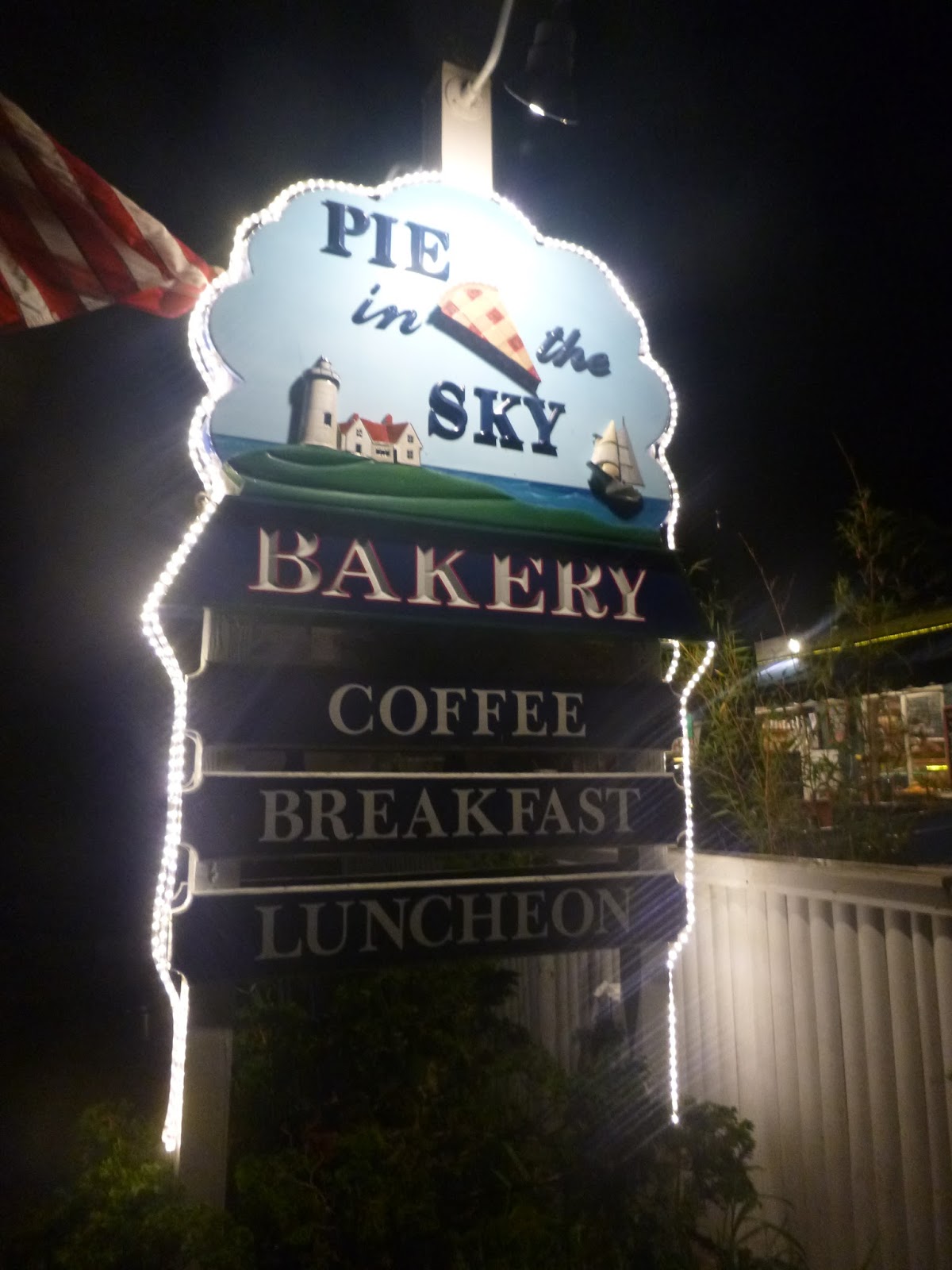But there was Woods Hole. Every Friday evening, I'd hustle down to South Station and catch the commuter bus. That was the moment I felt free and lighthearted. I'd roll into Woods Hole at around seven, and for the next 48 hours, we'd cook great meals of cheap mussels, explore the Cape, and have beers at the Captain Kidd. There were dances in the fire hall, and dinners with other young scientists, the dog parade, and the ferry horns waking us every morning. We'd walk up to Nobska Light and watch the sunset. Damon was working for the marine mammal acoustics lab, for Bill Watkins, one of the grandfathers of the field. Bill was a great boss, and as Damon says, everything he learned about good bosses, he learned from Bill. Damon took full advantage of all Woods Hole had to offer -- talks, and camaraderie, and the chance to stand on the shoulders of giants.
They were great years, and it was a fine time to be young and in love. We got engaged and held our wedding on the Quisset campus of the Woods Hole Oceanographic Institution -- where they charged us a whopping $100 for renting the space. But careers took us away from Boston and Woods Hole. Damon was invited to pursue a PhD at Duke, and I finished my Masters in Math and Science Education, then decided it'd be fun to spend some time in the classroom. We did what people do -- move on, to bigger and better things (mostly). Deep in my heart though, I will always have a soft spot for Woods Hole.
Last weekend, we headed down to Woods Hole for the Organization of Biological Field Station conference. We drove down with some colleagues, one of whom had worked in Woods Hole for quite a few years. As we drove along Woods Hole Road from Falmouth, the three of us had a little nostalgia fest. "Oh, there's the bike path!" "That's where the Sea Education Association has it's headquarters!" "Ah, we got married right there!" "Oh, I used to eat at that restaurant all the time!" We were glowing with happiness. Our friend who'd never been to Woods Hole pretty much rolled his eyes at our sentimentalism, but asked me a great question -- what's so great about Woods Hole?
This is what's so great about Woods Hole:
Science. BIG science. This is a place where intellectual curiosity meets practical engineering, and Woods Hole has a critical mass of people, stuff, and money to ask some pretty amazing questions.
We went on a field trip to the Waquoit Bay National Estuarine Research Reserve, where the staff took us out to their study site where they are measuring how greenhouse gases interact with salt marshes. That walkway might not look like much, but it's a clever way to minimize the impact of humans walking all over the study site, maximize the amount of sun reaching marsh plants on the path, and move really expensive pieces of equipment -- like $100,000 mass spectrometers -- out into the field.History. You can feel it, everywhere you turn.
Rachel Carson, amongst other greats, spent time here. She still sits on the waterfront, and you can sit down and have a good think alongside her. I recommend it.Although I simply love Rachel, I can't forget good old Louis Agassiz. Agassiz was one of the great scientists of the 1800's, with a passion for natural history. He was a professor at Harvard, and the founder of its Museum of Comparative Zoology -- one of the premier science institutions of its time. He also founded the precursor to the Marine Biological Laboratory, thus is considered on of the grandfathers of field study. He had strong opinions about education and research, and was known to shut students into a room with specimens and not let them out until they had "discovered all the truths which the objects contained". In short he was a formidable educator and scientist.
Now, I can't praise Agassiz for his brilliance without pointing out his flaws: Agassiz resisted Darwin's work, and turned out to have a racist streak in him that was manifested in his belief in polygenism, the belief that the races were created separately. Maybe he was simply a product of his time and class, but we can't forget Agassiz was wrong about many things.
This quote of the great man, hanging in the library of the Marine Biological Laboratory, has inspired generations of scientists, and is excellent advice even today:
A like-minded community.
Where else would the bells of the Catholic Church be named after scientists? Thanks be to God, for sure.The Eel Pond.
The heart of Woods Hole is the Eel Pond, surrounded by academic labs and old New England cottages, filled with sailboats and interesting sea life, and spanned by the drawbridge.A sense of humor.
Even the graffiti is about science. These are from courses at the Marine Biological Laboratory, and highlight "Neuro" -- note the neuron, "Embryo" -- with the cute little embryo, and CSS -- the Children's Science School, which turned 100 last year.Classic old buildings and art.
Some really great food, shared with some really great people.
Alas, I am home now, a bit sad to drive away from Woods Hole once again. I didn't cry for hours, as I did in 1997, nor do I have the radio stations of that area (WMVY) programmed on my car radio, refusing to take the preset off for a year. (Of course, now I can listen to it online, and I recommend WMVY to you all.) A little part of me wants those years back, though.
I tell you all -- get thee to Woods Hole. Spend a day or a lifetime. Let your curiosity take you where it will. If you're like so many of us, it will take you to great places.





















































